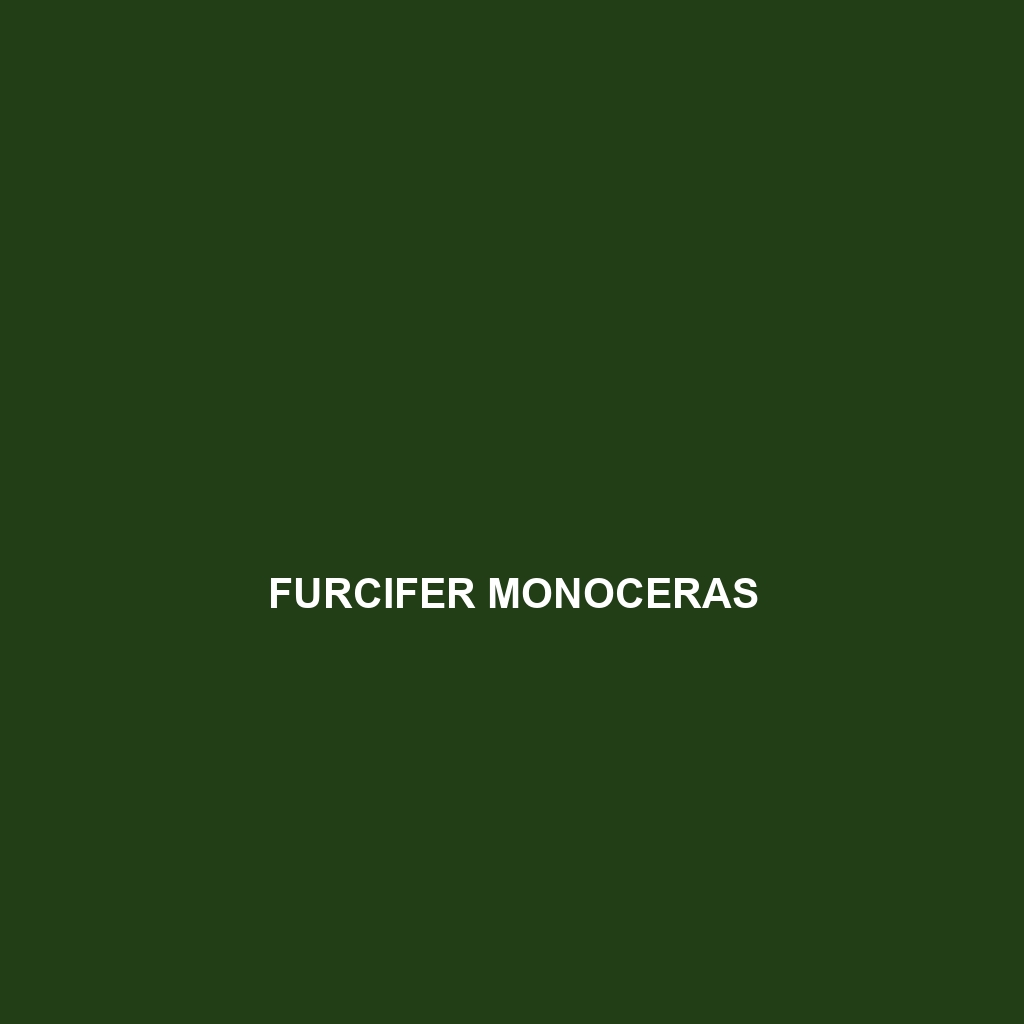Common Name
Furcifer monoceras
Scientific Name
Furcifer monoceras
Habitat
Furcifer monoceras, commonly known as the Madagascar chameleon, is primarily found in the tropical rainforests of Madagascar. This species thrives in humid and warm environments, typically ranging from lowland areas to montane forests. Its habitat is characterized by dense vegetation, which provides ample opportunities for camouflage and hunting. Additionally, Furcifer monoceras is occasionally spotted in adjacent savannas and shrubby areas. The climate in these regions is hot and rainy, reflecting the typical characteristics of a tropical rainforest ecosystem, which supports a diverse range of flora and fauna.
Physical Characteristics
Adult Furcifer monoceras can reach lengths of up to 30 centimeters (approximately 12 inches). One of its most distinctive features is the prominent casque—a helmet-like structure on its head that varies in shape and size among individuals. The coloration of this chameleon also presents fascinating variability, displaying rich greens, browns, and yellows that aid in camouflage within its leafy surroundings. During social interactions or mating, it can exhibit bright hues to attract potential mates or communicate with others. Its tail is prehensile, providing an advantage while navigating branches, and its unique zygodactylous feet allow for a strong grip on tree limbs.
Behavior
Furcifer monoceras exhibits a variety of intriguing behaviors characteristic of its species. Primarily arboreal, this chameleon is known for its exceptional ability to blend into its environment, a skill it uses both for hunting and evading predators. Its diet mainly consists of insects, which it captures with its long, sticky tongue. Though predominantly diurnal, this species exhibits some nocturnal habits, particularly during the mating season. Mating rituals involve elaborate displays of color changes and physical posturing, showcasing the vibrant hues that are characteristic of this chameleon.
Diet
Furcifer monoceras is primarily insectivorous, feeding on various insects, which constitute its main food source. These chameleons hunt using an ambush technique, waiting patiently for prey to approach before striking out with their elongated tongues, which can exceed the length of their bodies. While mainly insectivores, they may occasionally consume small vertebrates or fruits, demonstrating some omnivorous tendencies. This dietary flexibility helps them adapt to the availability of food resources in their rainforest habitat.
Reproduction
The reproductive cycle of Furcifer monoceras typically begins after a vibrant courtship display. Mating occurs during the warm and humid months, where males exhibit flare-ups of their colorful skin to attract females. Following mating, the female lays a clutch of eggs, typically ranging from 10 to 30 eggs, buried in the soil or concealed within leaf litter. The incubation period lasts approximately 4 to 6 months, depending on environmental conditions. Once hatched, the young chameleons are independent and must immediately fend for themselves, making their survival highly dependent on their ability to camouflage and avoid predators.
Conservation Status
The conservation status of Furcifer monoceras is currently listed as least concern according to the IUCN Red List. However, their habitat is increasingly threatened by deforestation and habitat fragmentation due to agricultural expansion and logging activities on Madagascar. Conservation efforts are underway to protect this species and its habitat, but challenges remain as the pressures on Madagascar’s unique ecosystems intensify.
Interesting Facts
One particularly intriguing aspect of Furcifer monoceras is its remarkable chameleon ability to change colors, which is not solely for camouflage but also for communication and temperature regulation. This species has been observed exhibiting a variety of color patterns not just during mating rituals but also among different individuals to express dominance or submission within social interactions. Furthermore, the casque serves not only as a physical characteristic but may also aid in enhancing vocal signals during mating calls.
Role in Ecosystem
Furcifer monoceras plays a vital role in its ecosystem as both a predator and prey. By controlling insect populations, it serves as a natural pest control agent in the rainforest. Furthermore, it contributes to the nutrient cycle by preying on insects and being consumed by larger predators such as birds and snakes, underscoring its position in the food web. As a species sensitive to environmental changes, it serves as an important indicator of ecosystem health, highlighting the conservation of biodiversity in Madagascar’s unique habitats.
